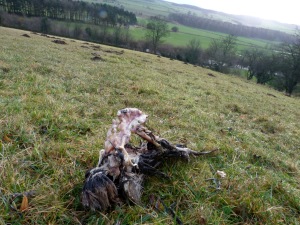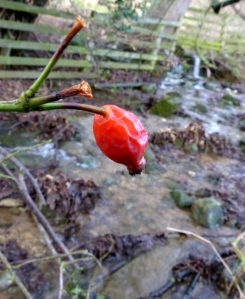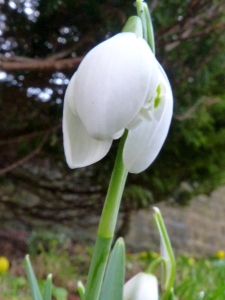Sleeping, watching TV, baking … wait no, ecology things!
I was very fortunate to spend a week in Yorkshire recently. Less fortunately, it was during a week of almost-constant rain. I took this as a splendid opportunity to relax. I did some nature-related bits: catching up on BBC’s Winterwatch and rereading some BBC Wildlife Magazines. However I will admit to sleeping quite a bit, watching some rubbish TV and baking some very yummy scones (I used the Taste*Chesil scone recipe and thoroughly recommend it).
Obviously, I couldn’t spend a week in Yorkshire and not go out for an adventure, even with such weather. On a precipitation-free morning, I headed over to a nearby reserve, the Yorkshire Wildlife Trust owned Leyburn Old Glebe reserve. Having done some prior reading on it, I wasn’t expecting much at this time of year. It is a traditionally managed hay meadow, known for its rich variety of wildflowers – and plants in general, over 80 species have been recorded here recently, with 11 different species of grass! (I must admit, I didn’t even know there were that many British grass species!) Despite the lack of flowering plants, I still had a nice walk around. The views are lovely as the meadow is located on a small hill overlooking the River Ure.
I was very impressed by the number of mole hills in the field, always a positive in my book. I’ve only ever seen a mole once, and it was unfortunately dead. I now regret not keeping it and trying to get the bones from it, but you learn from your mistakes I suppose.
Talking of dead things, I actually found the remains of two dead animals in the field. First, half of a dead bird, which I think was a pheasant. It was rather grisly and lacking a skull (damn, I do love a good skull), but I still poked at it and took photos of course.
I then found the remains of something else, bits of fur and bones spread out. No upper skull remaining, but there were two lower jaw bones which looked rather like they were Rodentia in origin.
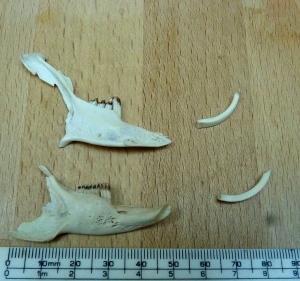
Lower jaw bones – the most caudal section (rostral?) came apart so not sure how far into the jaw it slides.
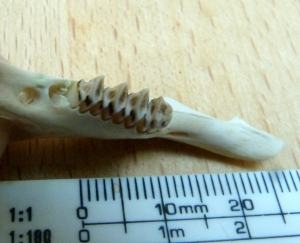
Lower jawbone, minus one tooth at the caudal end. Additionally, they all fell out but I think/hope I’ve put them back in the right order
Any guesses for animal of origin? I’m going to hazard a guess at rabbit, but I’ve never seen a rabbit skeleton so taking a guess from images on the internet. If you know the correct answer, please let me know!
So although I know little of plants (something I am hoping to address) and there were no flowers out to appreciate, I still had a fab time at this reserve. I know that I’ll definitely be back when I visit Yorkshire in spring and summer, and I’ll take a plant guide with me then!
Talking of which, I headed back to where I was staying and saw my first snowdrops of the year!


